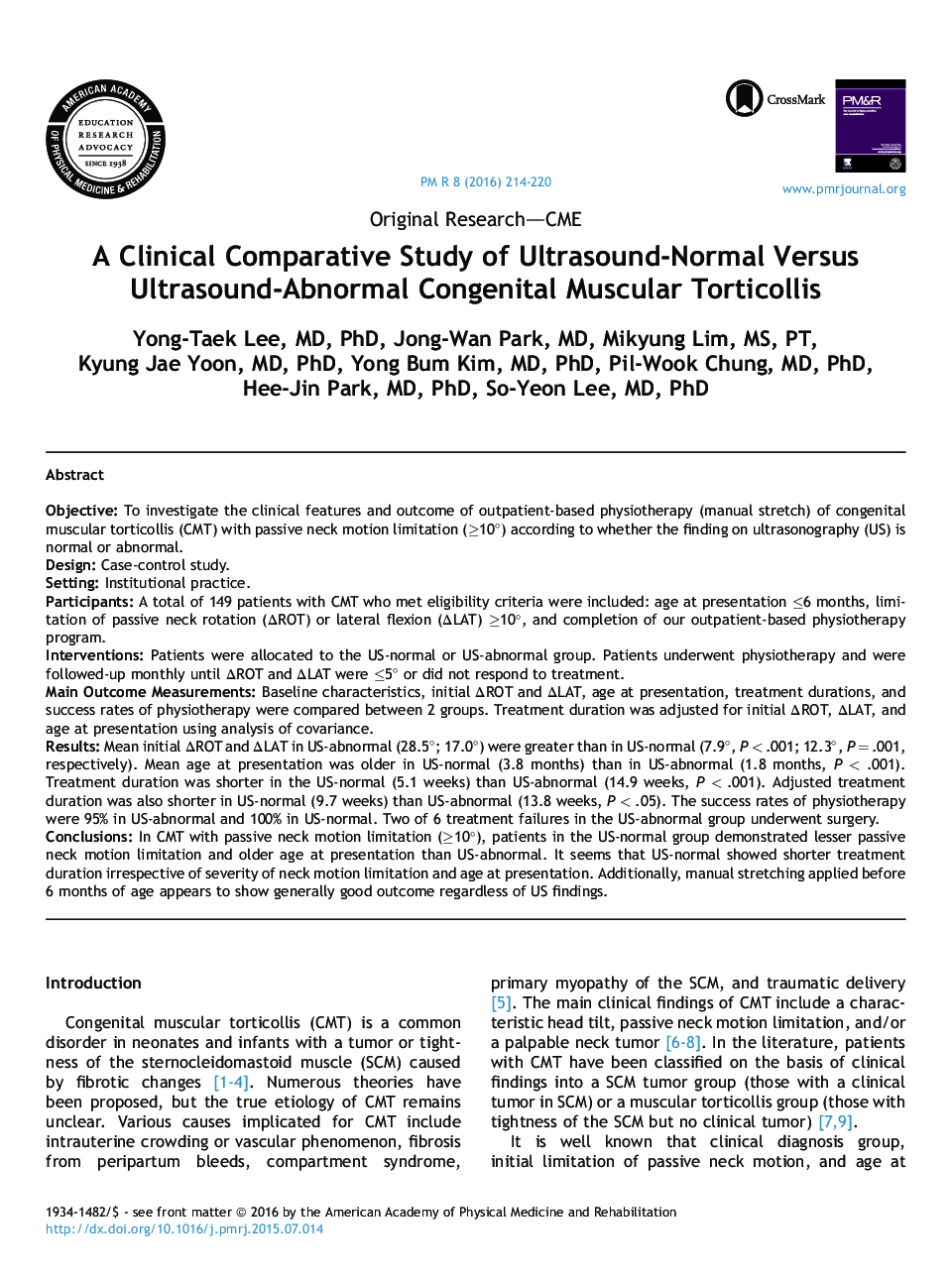| Article ID | Journal | Published Year | Pages | File Type |
|---|---|---|---|---|
| 2711943 | PM&R | 2016 | 7 Pages |
ObjectiveTo investigate the clinical features and outcome of outpatient-based physiotherapy (manual stretch) of congenital muscular torticollis (CMT) with passive neck motion limitation (≥10°) according to whether the finding on ultrasonography (US) is normal or abnormal.DesignCase-control study.SettingInstitutional practice.ParticipantsA total of 149 patients with CMT who met eligibility criteria were included: age at presentation ≤6 months, limitation of passive neck rotation (ΔROT) or lateral flexion (ΔLAT) ≥10°, and completion of our outpatient-based physiotherapy program.InterventionsPatients were allocated to the US-normal or US-abnormal group. Patients underwent physiotherapy and were followed-up monthly until ΔROT and ΔLAT were ≤5° or did not respond to treatment.Main Outcome MeasurementsBaseline characteristics, initial ΔROT and ΔLAT, age at presentation, treatment durations, and success rates of physiotherapy were compared between 2 groups. Treatment duration was adjusted for initial ΔROT, ΔLAT, and age at presentation using analysis of covariance.ResultsMean initial ΔROT and ΔLAT in US-abnormal (28.5°; 17.0°) were greater than in US-normal (7.9°, P < .001; 12.3°, P = .001, respectively). Mean age at presentation was older in US-normal (3.8 months) than in US-abnormal (1.8 months, P < .001). Treatment duration was shorter in the US-normal (5.1 weeks) than US-abnormal (14.9 weeks, P < .001). Adjusted treatment duration was also shorter in US-normal (9.7 weeks) than US-abnormal (13.8 weeks, P < .05). The success rates of physiotherapy were 95% in US-abnormal and 100% in US-normal. Two of 6 treatment failures in the US-abnormal group underwent surgery.ConclusionsIn CMT with passive neck motion limitation (≥10°), patients in the US-normal group demonstrated lesser passive neck motion limitation and older age at presentation than US-abnormal. It seems that US-normal showed shorter treatment duration irrespective of severity of neck motion limitation and age at presentation. Additionally, manual stretching applied before 6 months of age appears to show generally good outcome regardless of US findings.
